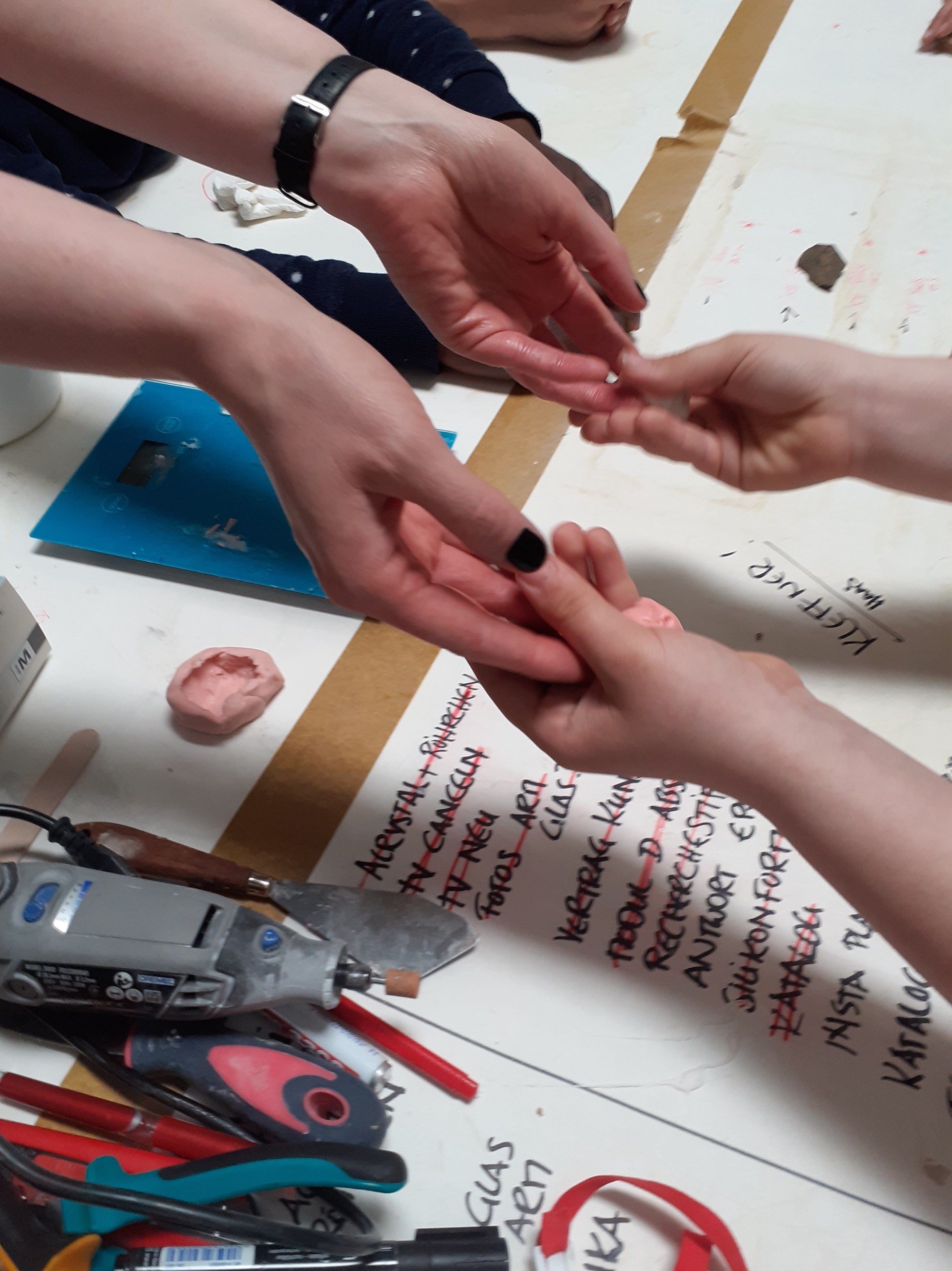Lena von Goedeke’s immortalized ice
In Lena von Goedeke’s studio, it’s only when we take a second look that we realize: nothing here is what it seems! We discover a life jacket made of concrete, blocks of ice made of glass and feet made of plaster. Sometimes it gets even more confusing, for example, there is an arm made of plaster that Lena has painted with pencil so that it looks like metal. Some of the objects are funny, others a bit scary. Lena first has to explain where all the things come from and what they are all about!
She tells us that she travels a lot, preferably to the Arctic. She goes there every year to observe the landscape. The first time she went, she was on a huge sailboat for three weeks. When she’s on land, she usually has a rifle with her because of the polar bears. That sounds pretty exciting, but Lena makes such a hard-nosed impression that it’s probably the bear that has to watch out.
The ice in the Arctic is melting faster and faster because of global warming – the ground is getting softer, mountains are moving, lakes are forming -–and that’s why it looks different every time. Maybe it’s because of this rapid change that Lena wants to capture the things she sees. She especially likes to make impressions of objects on site, of stones or pieces of ice, with the help of a pink mass. The impression molds she shows us look a bit like someone has melted down a whole lot of chewing gum or pink rubber mice. When she comes back to the studio with the molds, she pours in glass or concrete, for example. In this way, she can immortalize the ephemeral materials, at least as a form. The result is a copy that looks deceptively real, but is always a bit different from the original. After all, Lena has poured her own perception and memory – in other words, her own personal image of the object – into the form. For Lena, it’s a bit like photography: with photos, too, we often assume that they depict something exactly as it was. But in fact, the very direction from which we photograph an object often gives it a very specific meaning. The perception is then “colored,” just like Lena’s objects.
But how long has Lena actually been making art – and why? She tells us that art was already her favorite subject at school because she had a particularly great teacher. He tried out a lot of things with them and, above all, they were sometimes allowed to fool around. He also often took the class to exhibitions and studios, which impressed Lena a lot. She would like to see this in art classes in general, because there is so much to discover, especially in Berlin! The school was also the place where Lena presented her art for the first time, at the age of 16. She was very nervous then, and although she has had over 50 exhibitions in the meantime, she is just as excited every time as she was back then. Do you actually get a reward or a trophy for an exhibition? Unfortunately no, but if it goes well, the museum or gallery helps to produce new works and sometimes Lena also gets money. With that, of course, she then prefers to travel.
Before our journey into Lena’s world of wonder is over, we get to experiment with the pink mass ourselves. We knead and make impressions of all sorts of things – fingers, noses, ears and stones are packed in and held still until the mass is solid. Then, at home, we can fill the molds with water and make ice cubes that even show the fine lines and wrinkles of our skin. We look forward to trying this out and wave goodbye to Lena. If we were in charge, she would get a trophy right away – preferably one made of ice!






